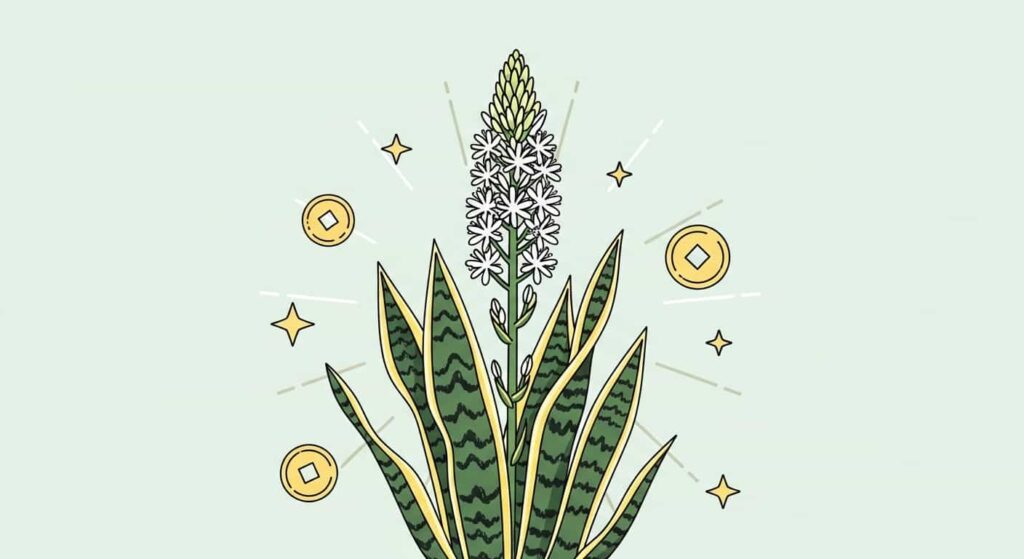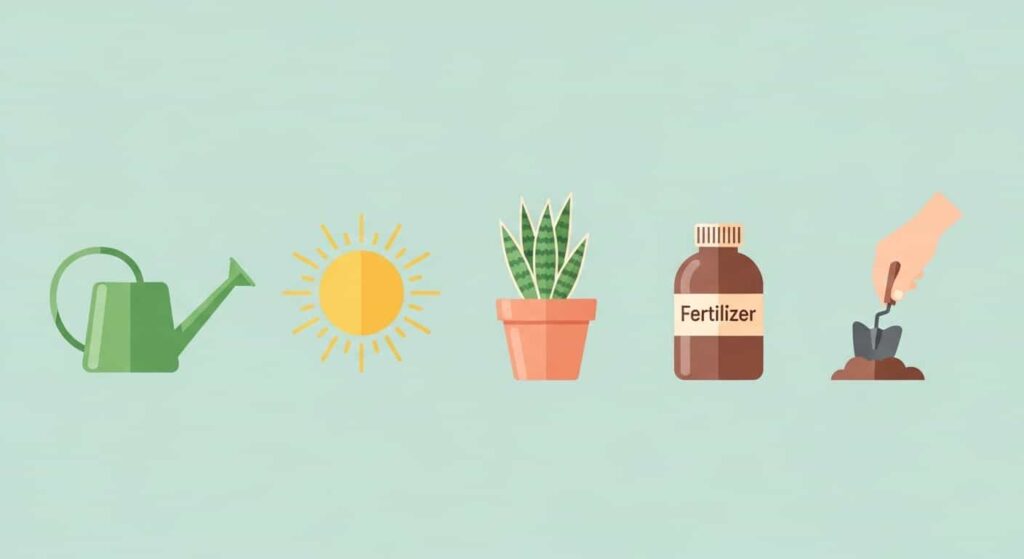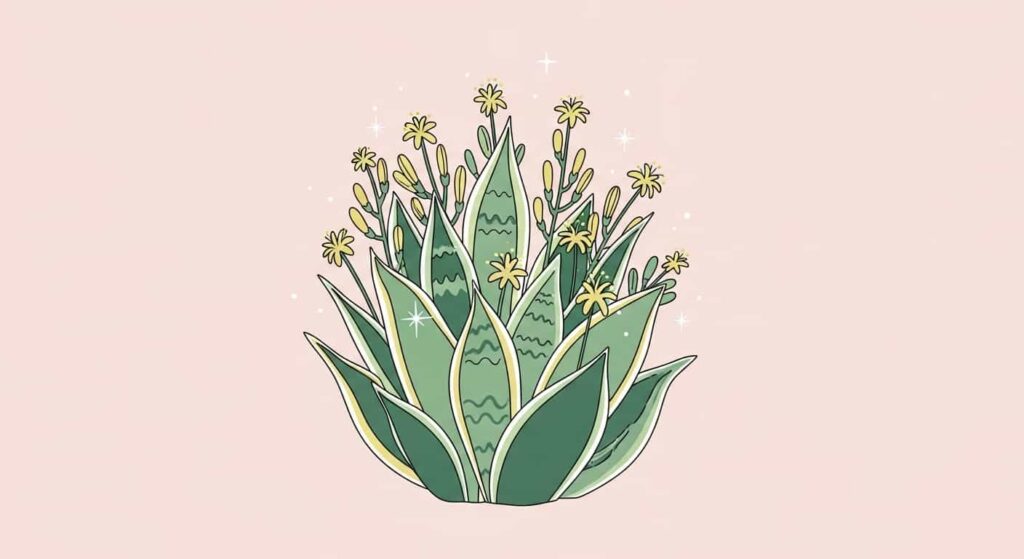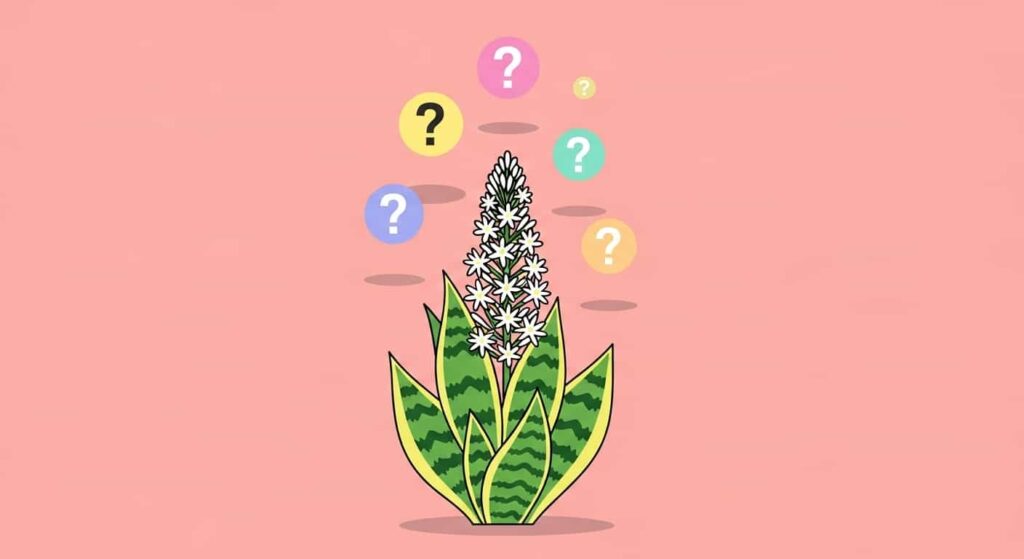Snake plants, also known by their scientific name Dracaena trifasciata (formerly Sansevieria trifasciata), are a staple in homes and offices worldwide. Celebrated for their striking, architectural leaves and nearly indestructible nature, they are a go-to choice for both novice and experienced plant owners. Their air-purifying capabilities and low-maintenance needs make them an almost perfect houseplant. But among the many questions new owners have, one surfaces with surprising frequency:
Does a snake plant bloom?
The short answer is yes, they absolutely can. However, a snake plant flowering is a rare and often unexpected event. Many long-time snake plant parents have never seen their plant produce a single blossom. This rarity makes the occasion special, turning a common houseplant into a source of wonder and conversation.
This comprehensive guide will walk you through everything there is to know about the elusive snake plant bloom. We’ll explore what these flowers look like, the specific conditions that encourage a snake plant to bud, and the rich symbolism associated with this event. Whether you’re trying to encourage your own plant to flower or are simply curious, you’ll find all the answers here.
What a Blooming Snake Plant Looks Like

Witnessing a snake plant flower for the first time is a memorable experience, largely because the blooms are so different from the plant’s sharp, modern foliage. When a mature snake plant decides to bloom, it sends up a tall, slender snake plant flower stalk from its base, nestled among the leaves. This stalk can grow quite tall, sometimes reaching up to three feet in height.
Adorning this stalk are clusters of small, delicate, and often fragrant flowers. The blossoms are typically greenish-white, creamy, or pale pink and have a tubular or lily-like shape. They open in clusters along the stalk, creating a beautiful, spire-like display.
One of the most delightful characteristics of a snake plant flower bloom is its scent. The flowers are known to be incredibly fragrant, releasing a sweet and powerful aroma, often compared to jasmine or hyacinth. This scent is most potent at night, a biological strategy to attract nocturnal pollinators like moths in their native habitat. In your home, this means you might walk into a room in the evening and be greeted by an unexpectedly lovely fragrance.
These flowers also produce a sticky, clear nectar. You may notice small, sweet-smelling droplets on the flowers, the stalk, or even on the leaves below. This nectar is a natural part of the blooming process and is harmless, although it can feel slightly messy to the touch.
Why Do Snake Plants Bloom?

Understanding why a snake plant flowers is key to potentially encouraging your own. Unlike many other houseplants that bloom as a sign of perfect health and happiness, a snake plant’s flowering is often a response to mild, consistent stress. In the plant world, this type of stress can signal that it’s time to reproduce, ensuring the continuation of its species.
Here are the primary factors that can trigger a snake plant to bloom:
Being Root-Bound
One of the most common triggers for a snake plant budding is being slightly root-bound. When a snake plant’s roots fill its pot, it creates a gentle stress that can encourage the plant to shift its energy from vegetative growth (producing more leaves) to reproductive growth (producing flowers). While severe root-binding can harm a plant, a snug pot is often the secret to seeing blooms. If you are constantly repotting your snake plant into a larger container, you may be preventing it from ever reaching this blooming stage.
Light Conditions
While snake plants are famous for their ability to tolerate low light, they thrive and are more likely to flower in bright, indirect sunlight. A spot near an east-facing window or a few feet back from a south- or west-facing window is ideal. Consistent, ample light gives the plant the energy it needs to produce a snake plant flower stalk and sustain its blossoms. A plant kept in a dark corner is highly unlikely to ever bloom.
Maturity and Age
Patience is a virtue, especially when it comes to snake plants. Young, immature plants will not flower. A snake plant needs to reach a certain level of maturity, which can take several years, before it has the energy reserves to bloom. If you have a young plant, focus on providing excellent care and give it time to grow.
Watering and Neglect
Mimicking the plant’s natural arid environment can also induce flowering. Snake plants prefer to dry out completely between waterings. Allowing for periods of benign neglect, where the soil remains dry for a bit longer than usual, can simulate a dry season and signal to the plant that it’s time to flower. Consistently overwatering your plant not only risks root rot but also discourages blooming.
In essence, a happy but slightly stressed snake plant is the most likely to bloom. It’s a delicate balance of providing enough light and care for it to be healthy, while also creating conditions that make it “think” it needs to reproduce.
The Meaning of a Snake Plant Flower: Lucky or Bad Omen?

Because a snake plant flower is so rare, it has gathered a fair amount of symbolism and folklore over time. The snake plant blooming meaning often varies by culture and personal belief, but it’s generally viewed as a positive and significant event.
In many traditions, seeing a snake plant bloom is considered a powerful sign of good luck and impending fortune. It is seen as a reward for a plant owner’s diligence and good care. The unexpected emergence of delicate flowers from such a tough, resilient plant is interpreted as a sign that good things are on the horizon. If your plant blooms, you might be in for a period of protection, prosperity, and positive energy. From this perspective, a snake plant flower lucky charm is a welcome sight in any home.
However, there is another, less common interpretation. In some belief systems, a houseplant flowering out of season or under stress is seen as a bad omen. The logic is that the plant is making a last-ditch effort to reproduce before it perishes, and this could symbolize a coming hardship. This view is far less prevalent, and most people choose to see the event in a positive light.
Ultimately, the meaning you attach to your blooming snake plant is personal. You can embrace it as a symbol of good fortune or simply appreciate it as a fascinating and beautiful display of nature’s wonders.
How to Encourage Your Snake Plant to Bloom

So, you want to try to get your snake plant to bloom? While there’s no guaranteed method, you can optimize its environment to increase the chances.
- Embrace the Snug Pot: Don’t be too quick to repot your snake plant. Allow it to become moderately root-bound. A good rule of thumb is to repot only when the plant is literally breaking its pot or the roots are heavily compacted.
- Maximize the Light: Move your plant to the brightest spot in your home where it won’t get scorched by direct, intense afternoon sun. An east-facing window that provides gentle morning sun is perfect.
- Water with Care: Let the soil dry out completely before you water again. In the winter, reduce watering even further, perhaps to once a month or less, to simulate a dormant period.
- Be Patient: Remember that only mature plants will bloom. If your plant is young, focus on giving it great care and let it grow. It could take five years or more for a plant to be ready.
- Fertilize Sparingly: Snake plants are not heavy feeders. You can provide a diluted, balanced houseplant fertilizer once or twice during the spring and summer growing season, but avoid over-fertilizing, as this can encourage leaf growth at the expense of flowers.
By following these steps, you create the perfect storm of “happy stress” that can lead to a beautiful snake plant flower bloom.
A Rare and Rewarding Sight

The blooming of a snake plant is a testament to the quiet, surprising wonders of the botanical world. It transforms a familiar, stoic houseplant into something delicate, fragrant, and magical. While there’s no guarantee your plant will ever flower, providing it with the right conditions is a rewarding journey in itself.
Whether you view it as a stroke of good luck or simply a beautiful biological event, a snake plant flowering is a special gift from a plant that usually asks for so little. So, give your snake plant some love, a little bit of stress, and a whole lot of patience—you might just be rewarded with one of nature’s most delightful surprises.
Frequently Asked Questions About Snake Plant Blooming

How often does a snake plant flower?
There is no set schedule. A snake plant may bloom once in its lifetime, it may bloom for several years in a row if conditions are perfect, or it may never bloom at all. Its rarity is what makes it so special.
What should I do after the flowers die?
Once the flowers have wilted and the bloom cycle is complete, you can prune the snake plant flower stalk. Use a clean, sharp knife or pruning shears to cut the stalk off as close to the base of the plant as possible. This allows the plant to redirect its energy back into growing leaves and roots.
Does blooming harm the snake plant?
No, the natural process of flowering does not harm a healthy snake plant. However, it does require a significant amount of energy. You may notice that the plant doesn’t produce any new leaves while it’s blooming. After the stalk is removed, the plant will resume its normal growth pattern.
Is the nectar from the flowers dangerous to pets?
The nectar itself is not known to be toxic. However, all parts of the snake plant are mildly toxic to cats and dogs if ingested, which can cause gastrointestinal upset like nausea and diarrhea. It’s best to keep pets from chewing on any part of the plant, including the flower stalk.
Can I propagate the flowers or seeds?
Snake plant flowers can be pollinated to produce seeds, but this is extremely difficult to achieve in an indoor environment. The easiest and most reliable way to propagate a snake plant is through leaf cuttings or division.

